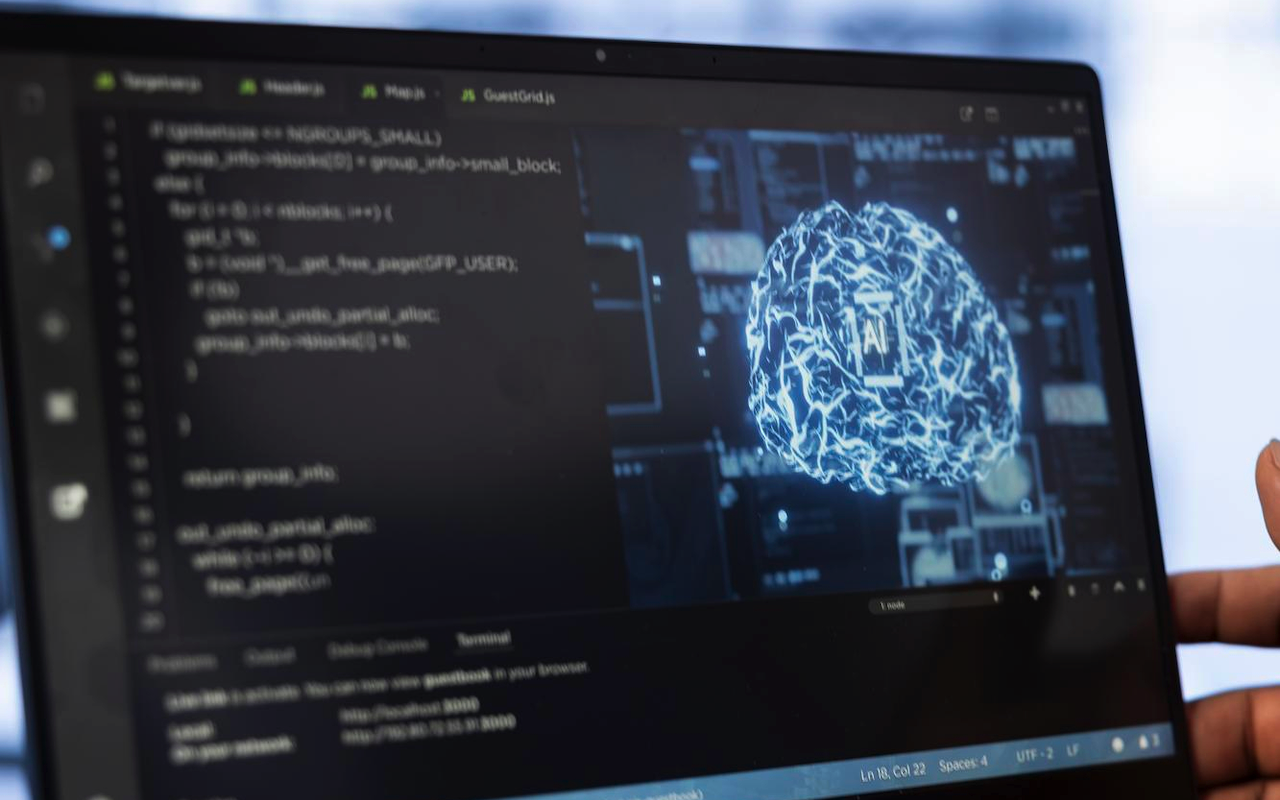
Artificial intelligence is changing how we write, search, and communicate—and GPT models sit at the center of that transformation. But how exactly does a model like ChatGPT “learn” to generate human-like language? The process is both mathematical and intuitive once broken down. In this guide, we’ll explain how GPT models are trained, the key stages of learning, and how APIs like Decodo help developers prepare and structure data for real-world fine-tuning.
Understanding the Core Idea: Predicting the Next Word
At its simplest, a GPT (Generative Pre-trained Transformer) model learns by predicting the next word in a sentence. It doesn’t think like a human but it statistically analyzes billions of examples to understand how language behaves.
For instance, if you write “The cat sat on the ___,” the model predicts “mat” because it’s seen similar sequences across training data. This process—called next-token prediction, and it is repeated millions of times until the model becomes exceptionally good at understanding grammar, tone, and context.
GPT doesn’t store “facts.” Instead, it captures probability patterns and how words tend to appear together. This is why it can mimic different styles, explain complex topics, or even write poetry. It is generating words that statistically fit the prompt and tone it’s given.
The Three Stages of GPT Training
Training GPT models involves three main stages: pretraining, fine-tuning, and reinforcement learning from human feedback (RLHF).
1. Pretraining
In the first stage, the model learns from massive text datasets including web pages, books, academic papers, and more. GPT-3, for example, was trained on roughly 570GB of text data, equivalent to hundreds of millions of pages. It used over 355 GPU-years of compute power and cost an estimated $4.6 million in processing alone.
During pretraining, the model becomes a “universal language learner.” It’s not specialized but gains general knowledge about syntax, semantics, and world facts (up to its last data cutoff).
2. Fine-Tuning
Fine-tuning adapts this general knowledge to a specific purpose like customer support, medical triage, or financial summarization. For instance, a developer might feed thousands of company-specific documents or chatbot dialogues into the model to improve relevance.
Here’s where Decodo API comes in. Decodo’s data-processing tools allow developers to clean, tag, and segment fine-tuning datasets efficiently. The API can automatically filter low-quality text, detect redundant content, and prepare tokenized input batches—making fine-tuning faster and cleaner. By integrating Decodo’s endpoints into a Python workflow, you can ensure your dataset meets quality standards before feeding it into the model.
3. Reinforcement Learning from Human Feedback (RLHF)
This final step teaches the model how to behave more like a helpful human assistant. Human reviewers rank model outputs, and algorithms adjust the system based on those rankings. RLHF is why modern GPTs respond with empathy, context awareness, and ethical caution rather than random text completions.
What GPT Models Actually Learn
GPT models don’t “understand” meaning but they detect patterns in how words and ideas relate. During training, they learn:
- Language structure: grammar, sentence order, and tone.
- Semantic relationships: associating “nurse” with “hospital” or “keyboard” with “typing.”
- Pragmatics: context-based decisions like when to be formal or conversational.
Despite this, GPTs have limits. They can still hallucinate or reflect bias present in their data. That’s why dataset design and filtering are critical steps in ensuring ethical, accurate performance.
The Role of Data: The Fuel Behind GPT
The strength of any GPT model depends heavily on the quality and diversity of its training data. A 2024 AI Index report from Stanford noted that large language models are now trained on 1–2 trillion tokens of text, a tenfold increase compared to early GPT versions.
However, more data doesn’t always mean better results. Biased, duplicated, or unverified data can cause inconsistent responses. This is where data preprocessing tools come in. With APIs, you can automate tasks like:
- Removing duplicates or corrupted lines.
- Classifying datasets by domain (e.g., legal, medical, educational).
- Tokenizing text and managing multilingual content.
By ensuring that every token (word fragment) counts, developers get better accuracy, smaller training losses, and cleaner model performance.
Inside the Architecture: The Transformer
GPT’s brain is called the Transformer, a neural network design introduced by Google in 2017. Its innovation lies in self-attention, a mechanism that lets the model understand how different words relate within a sentence.
For example, in the sentence “The animal didn’t cross the road because it was too tired,” GPT uses attention to link “it” back to “the animal,” not “the road.” This ability to connect context across long passages is what makes GPTs coherent and context-aware, even over long responses.
The Infrastructure That Powers GPT Training
Training massive GPTs requires enormous compute power. Models like GPT-4 are estimated to use over 10,000 NVIDIA A100 GPUs running for weeks. This is why training a model from scratch is out of reach for most individuals but smaller versions or domain-specific fine-tuning remain accessible.
Cloud providers like AWS, GCP, and Azure now offer distributed GPU clusters that make it possible to train models with billions of parameters. Using preprocessed data, developers can even fine-tune GPT derivatives (like GPT-Neo or GPT-J) at a fraction of the cost.
Evaluating How GPT Learns
After training, developers must test the model’s comprehension and accuracy using standardized benchmarks.
- Perplexity measures how well the model predicts text.
- MMLU (Massive Multitask Language Understanding) tests reasoning across 57 academic subjects.
- TruthfulQA evaluates factual consistency and bias.
For example, OpenAI reported that GPT-4 achieved 86% accuracy on professional exams and 40% lower hallucination rates compared to GPT-3. These metrics show measurable progress—but also highlight that models still need careful tuning.
A Mini Example: Training a Small GPT
Developers can experiment with scaled-down GPTs using open-source frameworks like Hugging Face. Here’s a simplified training loop:
from transformers import GPT2Tokenizer, GPT2LMHeadModel, Trainer, TrainingArguments
from decodo import DatasetCleaner
# Load data and clean with Decodo API
clean_data = DatasetCleaner("decodo_api_key").clean("data/raw_texts.txt")
# Tokenize and prepare dataset
tokenizer = GPT2Tokenizer.from_pretrained("gpt2")
inputs = tokenizer(clean_data, return_tensors="pt", truncation=True)
# Initialize model
model = GPT2LMHeadModel.from_pretrained("gpt2")
# Define training parameters
args = TrainingArguments(
output_dir="./results",
num_train_epochs=2,
per_device_train_batch_size=2,
save_steps=10_000,
logging_dir="./logs",
)
trainer = Trainer(model=model, args=args, train_dataset=inputs)
trainer.train()
This example shows how Decodo can act as a data-preparation layer before GPT fine-tuning—ensuring clean, structured input that prevents wasted GPU cycles and improves convergence.
Ethical Training and Bias Control
GPT models can unintentionally learn bias or misinformation if their data isn’t filtered. Developers must implement checks for harmful language, disinformation, and demographic imbalance. Responsible APIs include built-in bias scanning and redaction modules, helping identify sensitive or skewed phrases before training begins.
Transparency in model documentation and dataset selection is another key principle—users deserve to know where model knowledge comes from and what limitations exist.
The Future of GPT Training
The next generation of GPT training is moving beyond text. Multimodal models, those that understand images, videos, and audio; are becoming mainstream. Additionally, new techniques like self-improving training loops allow models to generate their own high-quality synthetic data, reducing the need for massive human-curated datasets.
Smaller, more energy-efficient GPTs are also emerging, enabling fine-tuned models to run directly on devices instead of data centers. Combined with APIs for streamlined data curation, the next era of training will be faster, greener, and more accessible than ever.
Conclusion
GPT models learn by seeing, predicting, and refining billions of text patterns, one token at a time. Behind their conversational ability lies an intricate process of data preparation, neural optimization, and human feedback.
APIs are making this process approachable for researchers and businesses alike automating data cleaning, filtering, and annotation so developers can focus on creativity, not complexity.
Understanding how GPTs learn doesn’t just reveal how they “think”, but it helps us train them more responsibly, efficiently, and ethically for the future of AI-powered communication.
Featured Image by Freepik.
Share this post
Leave a comment
All comments are moderated. Spammy and bot submitted comments are deleted. Please submit the comments that are helpful to others, and we'll approve your comments. A comment that includes outbound link will only be approved if the content is relevant to the topic, and has some value to our readers.



Comments (0)
No comment